
HD 7950 3GB - A Tale of Two Cards
Oddly for a new GPU launch, there seem to be two stock versions of the HD 7950 3GB available to AMD’s graphics partners, even before they begin to develop their own range of custom coolers and PCBs. While both are dual slot and retain the red and black styling we’ve come to expect from AMD GPUs, the two are very different when it comes to cooling.The larger of the two is near identical to the cooler and PCB of the HD 7970 3GB. Measuring in at 275mm and weighing just over 1kg, it’s recognisable by the large radial fan to the rear of the card, which pulls in air from the card’s rear and then exhausts it out of the I/O. Beneath the card’s plastic shroud we find the same copper vapour chamber as used on the HD 7970 3GB, as well as a near identical PCB – the only difference is is one less capacitor below the PCI-E power connectors, and one less power phase, with four for the GPU and one for the memory for a total of 5+1 phases.
AMD is pitching this version as the primary model, prioritising ‘directed and exhausted airflow’ as opposed to the alternative, which has been ‘generally optimized for acoustics.’
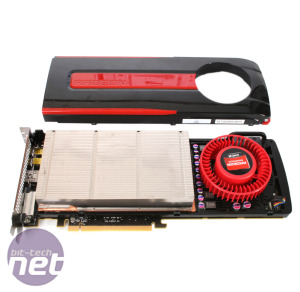
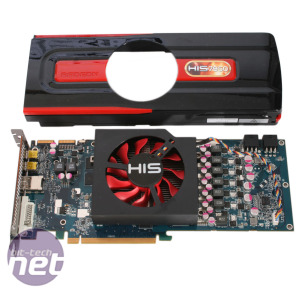
Click to enlarge - The 'primary' HD 7950 3GB (left) and 'acousticly optimised' HD 7950 3GB (right). We think most partners will be using the latter design.
However, we’ve been told that the majority of partners will be shipping parts using this alternative design, so are focusing our coverage on it. Measuring in at 265mm and weighing 612g, almost 400g less than the ‘primary’ model, it’s a very different design to that used on the HD 7970 3GB.
The glossy plastic cover is easily removed, revealing a stack of aluminium cooling fins sat on top of the central GPU. As with the larger version, these cooling fins are fitted to a vapour chamber that makes contact with the GPU itself, dispensing with the need for heatpipes. But unlike the larger version, the vapour chamber contact plate doesn’t make contact with the 12 GDDR5 chips or the card’s power circuit. Fitted on top of the cooling fin stack is an 80mm axial fan, blowing air down through the cooling fin stack and then out of either side. Unlike with the larger radial fan version, this means that half of the GPU’s heat is then exhausted over the card’s power circuitry and then out the card’s rear into your case.
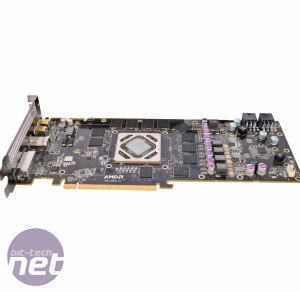
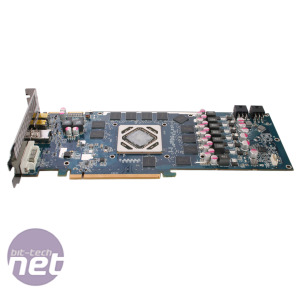
Click to enlarge - The two versions have very similar PCB designs, although the 'acoustically optimised' version has more power phases
A pair of top mounted 6-pin PCI-E power connectors and DVI, HDMI and pair of DisplayPort 1.2 outputs along one row the rear I/O are standard for both versions of the HD 7950 3GB. As with the HD 7970 3GB, the card supports up to four simultaneous outputs, with the promise of up to six should AMD’s DisplayPort splitter arrive. Power circuitry consists of six phases to the GPU and a single phase to the GPU, for a total of 7+1 phases; one more than the stock HD 7970 3GB.
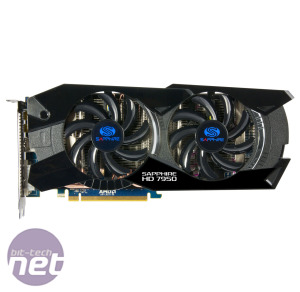
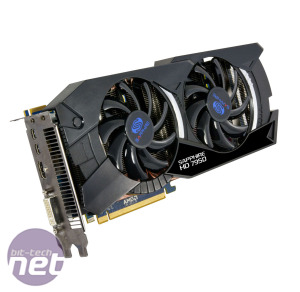
Click to enlarge - Custom cooled versions are on the way; here's Sapphire's dual fan weilding overclocked HD 7950 3GB OC
Despite the differences in cooling and power circuitry, stock clock speeds for both versions are identical; 800MHz core frequency and 1,250MHz (5.5GHz) memory frequency. As with the HD 7970 3GB though, AMD has been keen to emphasise the HD 7950 3GB’s overclocking abilities, and we fully expect partner cards to ship with core clock speeds approaching 1GHz, alongside the usual array of heatpipe and fan packed custom coolers.

MSI MPG Velox 100R Chassis Review
October 14 2021 | 15:04

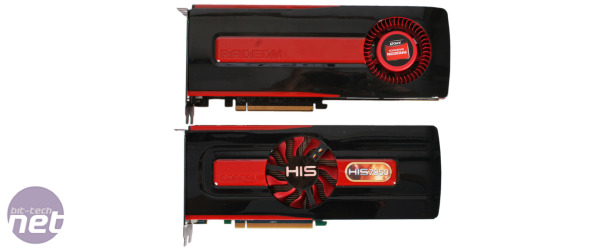







Want to comment? Please log in.